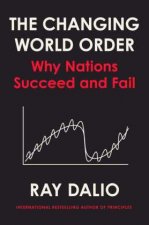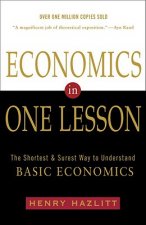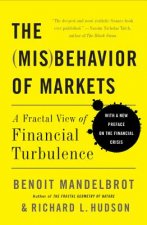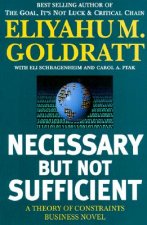
Kód: 02437131
Mezzanine Capital in Europe
Autor Markus Herbert Tyl
Diploma Thesis from the year 2002 in the subject Business economics - Investment and Finance, grade: 1,0, University of Vienna (Sozial- und Wirtschaftswissenschaften), language: English, abstract: Inhaltsangabe:Abstract:§In corpor ... celý popis
- Jazyk:
 Angličtina
Angličtina - Väzba: Brožovaná
- Počet strán: 120
Nakladateľ: Diplom.de, 2002
- Viac informácií o knihe

Mohlo by sa vám tiež páčiť
-

Lectures on the History of the Nineteenth Century
56.81 € -

Gene Manipulation and Expression
70.20 € -

Ransomed by the Fall
55.08 € -

We Are Not Such Things
20.59 € -

Franziskus - Der Bruder von Sonne und Tieren
14.80 € -9 % -

Lebendiger Wald
9.53 €
Darujte túto knihu ešte dnes
- Objednajte knihu a vyberte Zaslať ako darček.
- Obratom obdržíte darovací poukaz na knihu, ktorý môžete ihneď odovzdať obdarovanému.
- Knihu zašleme na adresu obdarovaného, o nič sa nestaráte.
Viac informácií o knihe Mezzanine Capital in Europe
Nákupom získate 286 bodov
 Anotácia knihy
Anotácia knihy
Diploma Thesis from the year 2002 in the subject Business economics - Investment and Finance, grade: 1,0, University of Vienna (Sozial- und Wirtschaftswissenschaften), language: English, abstract: Inhaltsangabe:Abstract:§In corporate finance two major decisions have to be made. One is the investment decision which means companies must decide which available opportunities they should invest in. The other one, the financing decision, also known as the capital structure decision, tries to answer the question of from where the money to finance investment projects should come.§Money can either be raised internally, through retained earnings, or externally. Mezzanine capital, as a special type of external finance, therefore falls into the area of the financing decision.§Although the use of mezzanine capital has increased in Europe in recent years, this special type of finance is still relatively unknown in some countries. Therefore, the purpose of my thesis is to familiarise the reader with this particular type of finance. It is structured in a way that it sequentially deals with the following questions:§How did mezzanine develop?§Can it offer an advantage compared to financing only with debt and equity?§Which basic types of mezzanine instruments exist and how are they valued?§When and where is mezzanine used?§At the end, an example of a management buy-out in which mezzanine is used is provided. This will give important insights into the practical use of multiples to structure the deal, the mezzanine investment process, the investment criteria and the various exit routes that exist.§The paper will be concluded with an overview on the European mezzanine landscape and on how recent stock market developments and the new Basel capital accord (Basel II) may impact the future of mezzanine capital.§Special terminology or important information that is used in the private equity area is written in bold letters if mentioned for the first time in the text.§The issue of a convertible promissory note to raise funds to build a canal in the UK is believed to be the first mezzanine instrument. It was issued in 1798 by the Company of proprietors to the Canal Navigation from Manchester to or near Ashton-under-Lyne and Oldham .§However, the idea of converting debt into equity was already used after the War of Spanish Succession when in 1711 the British government had a heavy debt burden. As the debt was trading at a substantial discount it made the refinancing more difficult. A solution was found in creating a new body, the South Sea Company , whose newly issued shares were to be swapped for Pds. 9.5m of floating debt - thereby reducing the interest payments by three percent per annum.§In the 1980s a high rate of new product innovation, especially in financial markets, could be observed. Among the products innovated or revived during that decade were swaps, index options, mortgage bonds and mezzanine finance. The following reasons led to the particularly strong product development in the corporate finance market:§Deregulation of the domestic financial markets in the major OECD countries.§The lifting of controls over the flows of external capital movements in many countries.§Liberalisation towards the internationalisation of securities markets and merger and acquisition (M&A) activity.§Global monetary conditions with low interest rates and a revival of economic and corporate activity.§The above stated reasons in turn led to increased competition and the establishment of large financial conglomerates which mainly used tailor-made financial services to differentiate their products from those of competitors and also to fulfil their clients desires.§After the equity market crash in October 1987 the monetary banks of the largest economies, fearing a financial recession, reduced interest rates even further. Investments...
 Parametre knihy
Parametre knihy
Zaradenie knihy Knihy po anglicky Economics, finance, business & management Economics
114.85 €
- Celý názov: Mezzanine Capital in Europe
- Podnázov: With Special Emphasis on Capital Structure
- Autor: Markus Herbert Tyl
- Jazyk:
 Angličtina
Angličtina - Väzba: Brožovaná
- Počet strán: 120
- EAN: 9783838661025
- ISBN: 3838661028
- ID: 02437131
- Nakladateľ: Diplom.de
- Hmotnosť: 168 g
- Rozmery: 210 × 148 × 7 mm
- Dátum vydania: 21. November 2002
Obľúbené z iného súdka
-

Principles for Dealing with the Changing World Order
23.43 € -8 % -

Team Topologies
24.04 € -10 % -

Freakonomics
9.02 € -10 % -

Misbehaving - The Making of Behavioral Economics
10.64 € -10 % -

Indispensable Milton Friedman
29.21 € -

Little Book of Economics
11.05 € -23 % -

Why Nations Fail
12.88 € -

Pyramid Principle, The
47.37 € -

Essential Mathematics for Economic Analysis
73.25 € -

Economics In One Lesson
15.62 € -23 % -

Predictably Irrational
15.01 € -17 % -

Price of Inequality
10.14 € -15 % -

(Mis)Behaviour of Markets
14.30 € -23 % -

Debt, 10th Anniversary Edition
27.79 € -22 % -

A-Level Economics: Year 1 & 2 Complete Revision & Practice (with Online Edition)
28.10 € -9 % -

The Invisible Hand
8.92 € -13 % -

Liar's Poker
13.69 € -

Rational Optimist
13.69 € -

Irrational Exuberance
20.49 € -7 % -

Art of Statistics
10.95 € -23 % -

Scrum - A Pocket Guide - 3rd edition
22.62 € -4 % -

Hypomanic Edge
20.89 € -13 % -

How I Made One Million Dollars Last Year Trading Commodities
40.98 € -19 % -

Misbehavior of Markets
24.44 € -

Econometric Analysis, Global Edition
86.64 € -

Cartoon Introduction to Economics
19.57 € -8 % -

Economics: The User's Guide
13.18 € -21 % -

Rise of Carry: The Dangerous Consequences of Volatility Suppression and the New Financial Order of Decaying Growth and Recurring Crisis
27.49 € -16 % -

Myth of Capitalism - Monopolies and the Death of Competition
23.02 € -20 % -

How Rich Countries Got Rich and Why Poor Countries Stay Poor
16.43 € -23 % -

Business Etiquette in Brief
13.08 € -18 % -

Intermediate Microeconomics and Its Application
104.90 € -

Discovery, Capitalism & Distributive Justice
22.72 € -

Economic Point of View
27.99 € -

Are the Rich Necessary?
13.18 € -1 % -

Driving Digital Transformation
21.80 € -23 % -

Start-Up Nation
9.22 € -22 % -

Economic Facts and Fallacies
16.93 € -20 % -

Decision Book
18.86 € -2 % -

Necessary but Not Sufficient
17.04 € -19 % -

Freakonomics
6.38 € -25 % -

Economics Book
21.30 € -16 % -

Leading at a Higher Level
32.15 € -

Principles of Economics
15.72 € -13 % -

Macroeconomics For Dummies
24.65 € -5 % -

45 Second Presentation That Will Change Your Life
9.83 € -19 % -

Economics of the Public Sector
82.58 € -

Factfulness
10.14 € -24 % -

Currency Wars
16.53 € -14 %
Osobný odber Bratislava a 2642 dalších
Copyright ©2008-24 najlacnejsie-knihy.sk Všetky práva vyhradenéSúkromieCookies



 21 miliónov titulov
21 miliónov titulov Vrátenie do mesiaca
Vrátenie do mesiaca 02/210 210 99 (8-15.30h)
02/210 210 99 (8-15.30h)